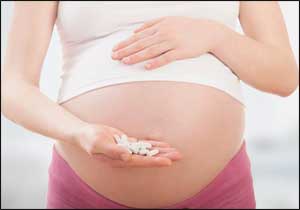- Home
- Editorial
- News
- Practice Guidelines
- Anesthesiology Guidelines
- Cancer Guidelines
- Cardiac Sciences Guidelines
- Critical Care Guidelines
- Dentistry Guidelines
- Dermatology Guidelines
- Diabetes and Endo Guidelines
- Diagnostics Guidelines
- ENT Guidelines
- Featured Practice Guidelines
- Gastroenterology Guidelines
- Geriatrics Guidelines
- Medicine Guidelines
- Nephrology Guidelines
- Neurosciences Guidelines
- Obs and Gynae Guidelines
- Ophthalmology Guidelines
- Orthopaedics Guidelines
- Paediatrics Guidelines
- Psychiatry Guidelines
- Pulmonology Guidelines
- Radiology Guidelines
- Surgery Guidelines
- Urology Guidelines
Prenatal exposure to paracetamol may bring early puberty in girls

Exposure to acetaminophen (Paracetamol) -- commonly used pain-relieving medication -- during pregnancy is associated with an earlier onset of puberty in their daughters, according to a new study published in the American Journal of Epidemiology. Male pubertal development, however, had no strong association with acetaminophen exposure.
Puberty onset in girls is characterized by the development of breast, pimples, and hair growth in places where there was none previously. It generally begins when a girl attains the age of ten or eleven.
"We found a 'dose-response' correlation. That is to say, the more weeks with paracetamol during pregnancy, the earlier puberty in girls, but not in boys," says Ernst.
Also Read: Acetaminophen Use During Pregnancy Associated with Language Delay in Girls
The study is based on the largest collection of puberty data in the Danish birth cohort (BSIG.dk). A group of around 100,000 women provided detailed information about their use of paracetamol three times during their pregnancy. A total of 15,822 children, 7,697 boys and 8,125 girls born to these mothers between 2000-2003 were followed from the age of eleven and throughout puberty with questionnaires every six months about several different aspects of their development.
"Our results suggested a tendency towards slightly earlier attainment of almost all studied markers of female pubertal development with increasing number of weeks of exposure (i.e., about 1.5–3 months earlier age at pubic hair, axillary hair and acne development comparing unexposed with those prenatally exposed for more than 12 weeks," write the authors.
Also Read: High-dose calcium during pregnancy may prevent preeclampsia
"While entering puberty one-and-a-half to three months earlier may seem unimportant when taken together with the frequent use of paracetamol during pregnancy, our findings ought to make people take notice. Our results are certainly not the decisive factor that should change current practice, but the perception of paracetamol as 'the safe and harmless choice' during pregnancy ought to be challenged," explains Andreas Ernst.
Worldwide, the average consumption of paracetamol has been increasing, and studies suggest that more than fifty percent of pregnant women make use of painkillers containing paracetamol at least once during their pregnancy.
"As earlier pubertal development has previously been tied to an increased risk of more frequent and serious diseases in adulthood such as obesity, diabetes, cardiovascular diseases, and testicular and breast cancer, it's important to identify possible causes of early puberty so we can prevent this development," says Andreas Ernst.
For further reference log on to https://doi.org/10.1093/aje/kwy193

Disclaimer: This site is primarily intended for healthcare professionals. Any content/information on this website does not replace the advice of medical and/or health professionals and should not be construed as medical/diagnostic advice/endorsement or prescription. Use of this site is subject to our terms of use, privacy policy, advertisement policy. © 2020 Minerva Medical Treatment Pvt Ltd